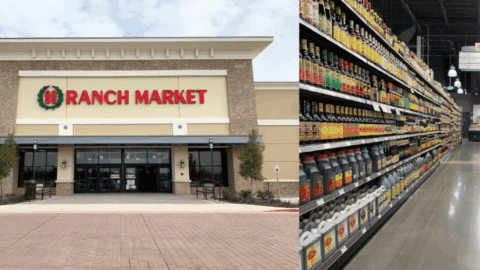Every day, retailers are losing profits from an unexpected source: their own point-of-sale solution. These legacy systems quietly drain margins through hidden operational inefficiencies, missed revenue opportunities and mounting infrastructure costs that extend far beyond obvious technical expenses.

As consumer expectations evolve and technology advances at a rapid rate, these outdated systems are becoming costly anchors that drag down store performance and limit growth potential. For retailers still tied to legacy systems, the financial implications are becoming increasingly difficult to ignore.
The Numbers Tell a Compelling Story
Market data highlights the dramatic transformation occurring within the industry. The retail POS terminal market reached $36.7 billion in 2023 and is projected to grow at a 5.5% annual rate through 2032, driven primarily by mobile POS adoption. This growth reflects a fundamental shift in retailers’ priorities.
Nearly half of retail executives are making updating their POS a top priority for 2025. According to the 2025 Store Experience Study by Chain Store Age and IHL Group, 42% of retail leaders rank “refreshing the POS” as their fourth-highest technology initiative.
The interconnected nature of retailers’ upcoming priorities tells the story clearly:
- 51% cite inventory visibility as their top concern
- 50% prioritize personalizing the customer experience
- 40% focus on empowering store associates
Modern POS systems address all three challenges simultaneously, enabling faster checkouts and more personalized customer interactions, explaining why nearly half of retailers view POS refresh as critical to their success.
The pressure is rising: omnichannel shoppers spend 1.5 times more each month than single-channel shoppers, yet many retailers struggle to keep up with demand with outdated systems.
Mobile-First Stores: The New Revenue Engine
The most dramatic transformation is occurring on the sales floor itself. Deloitte notes that 80% of all shopping still occurs in the store, making mobile-enabled associates crucial for achieving acompetitive advantage.
Mobile-first POS solutions are driving higher conversion rates by empowering associates with:
- Real-time customer data
- Accurate and up-to-date inventory information
- Complete product details accessible anywhere across the enterprise
This mobile advantage extends beyond traditional retail environments. Nearly half of retail executives surveyed by Deloitte plan to make moderate to significant investments in physical store remodels or new locations in 2025, emphasizing the importance of convenient locations and unique experiences. Modern POS systems enable retailers to participate in more events and activations both in and outside the store by dramatically simplifying setup and reducing infrastructure requirements.
The omnichannel integration capabilities are equally transformative. McKinsey research indicates that retailers implementing unified customer experiences across channels consistently outperform their competitors. PwC mirrors that sentiment, reporting that consumers expect a smooth and tech-enhanced shopping experience, regardless of whether they’re buying online or in-store.
These unified POS systems enable game-changing services like:
- Enhanced pickup and return options like BOPIS and BORIS
- Endless aisle capabilities
- Unified customer profiles that bridge online and offline commerce
The Hidden Costs of Standing Still
While the revenue opportunities are compelling, the cost implications of maintaining legacy systems are equally significant. The shift from specialized Windows-based terminals to consumer-grade mobile devices represents a major cost reduction opportunity, with retailers reporting:
- Lower hardware costs
- Reduced maintenance requirements
- Greater device flexibility
Cloud-based architectures are eliminating the need for in-store servers entirely, addressing both immediate hardware costs and ongoing IT support expenses. This serverless approach not only reduces capital expenditure but also improves system reliability and provides real-time access to performance data, eliminating the delays associated with traditional polling systems that can impact customer experience during peak periods.
Perhaps most importantly, modern POS systems are dramatically reducing training requirements. Best-in-class solutions have reported a decrease in training time from weeks to hours, with benefits during peak seasons when deploying temporary staff is critical.
The user experience improvements translate directly to operational benefits:
- Fewer transactional errors
- Faster associate onboarding
- Improved customer service capabilities
Strategic Investment, Not System Replacement
Forward-thinking retailers are approaching POS modernization as a platform investment rather than a simple system replacement. The most successful implementations share common characteristics:
- Mobile-first capabilities
- Omnichannel integration
- Robust change management processes to ensure adoption across all levels of the organization
The Financial Benefits Manifest in Phases
Year-One Improvements:
- Immediate hardware cost savings
- Reduced training expenses
- Productivity gains from improved customer experiences
Ongoing Annual Benefits:
- Increased sales from enhanced mobility and omnichannel integration
- Reduced IT support costs
- Improved promotional effectiveness
Long-Term Strategic Advantages:
- Competitive positioning through superior customer experiences
- Operational flexibility that enables rapid response to market changes
The Path Forward
The transformation of retail POS represents more than a system upgrade; it’s a fundamental reimagining of how retailers engage with customers and manage operations.
The question facing retailers today isn’t whether to invest in modern POS technology, but how quickly they can implement these systems to capture the measurable benefits. In an environment where customer expectations continue to evolve at digital speed, the cost of inaction may ultimately prove far greater than the investment required to modernize. If you want to learn more about powering the modern store with mobile-first POS, visit our website.















